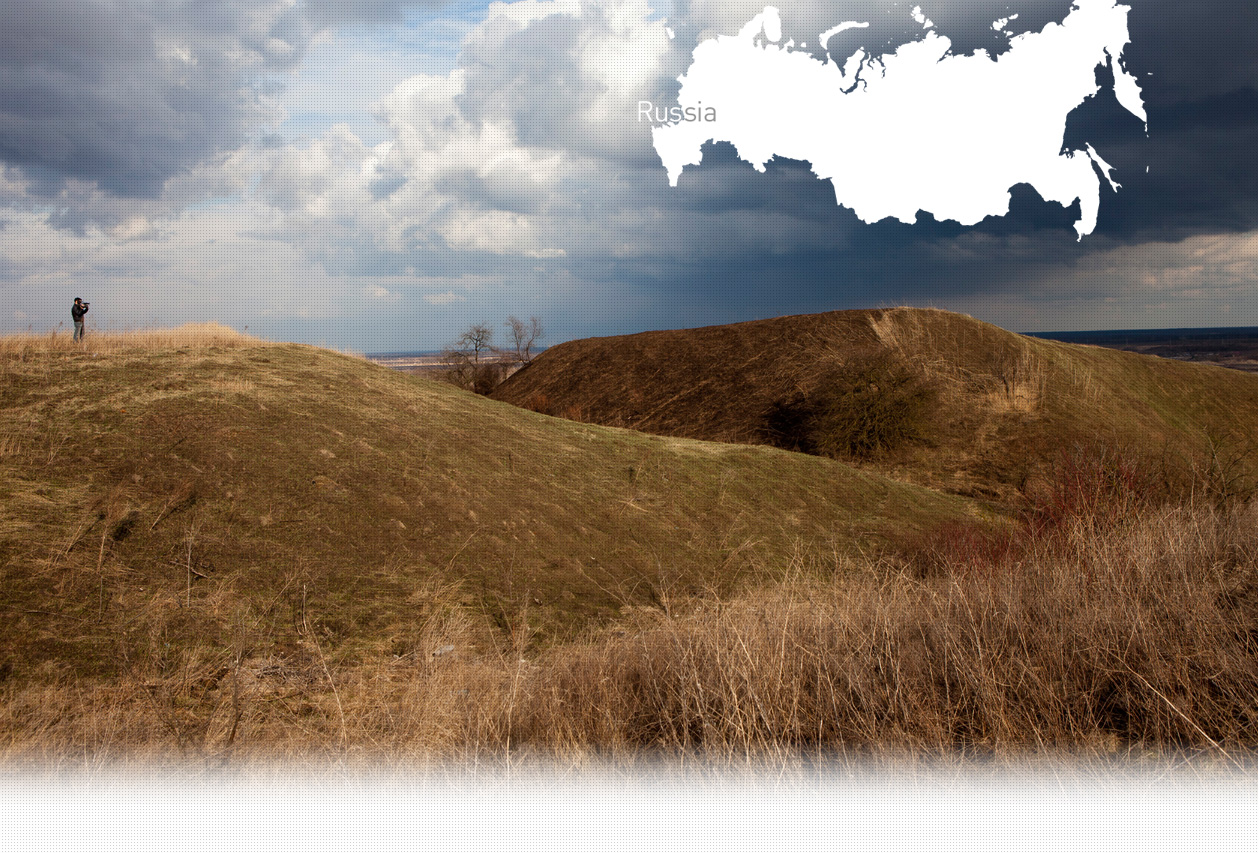

1 Killing site(s)
Aleksandr P., born in 1926: "I had several friends among the Jews. I remember Volodia, Izik, Yakov. Izic and his family had evacuated before the Germans arrived. Volodia was hiding in an abandoned house for a while. We would bring him food. But, at the end he was found and killed. Yakov was denounced by someone. I saw two policemen bringing Yakov towards the gallows installed in the city center near the church and the cinema. On his chest he had a sign reading ‘Jew.’ Before being hanged, a German officer made a speech that was translated by a translator. Yakov remained hanged on the gallows for three days. Only after that was his body taken to the ravine behind the park. There was a big pit there where many other corpses were entombed, including those of Soviet prisoners of war and non-Jewish civilians." (Witness n°807R, interviewed in Belgorod, on August 9, 2018)
"On February 5, 1942, at 7am, several big trucks arrived at pharmacy n°8. Under the order of the town’s Kommandant, the detainees, including some Jewish families, were loaded on trucks and transported [to] the cob factory [«Камышитовый завод»]. The factory in question had been surrounded by German soldiers beforehand. The Mikhailovka residents were forbidden to live in their homes, but they could see everything through the windows. The detainees, women, men, and older people were first brought in groups to the factory’s barn. Once in front of the barn, on the snow, by the cold reaching minus 30-35°C, they were forced to strip naked. Then, they were pushed naked inside the barn where they were shot with submachine guns. Six detainees were ordered to pick up the clothes removed by the victims and store them in a designated place. Then, these six men were also shot. Afterwards, the barn was exploded and burnt. The following morning, the executioners again sprayed the building with gasoline to keep the fire going. Four days later, the charred remains were covered with sand.
The commission examined the remains found near the cob factory and established that there, more than 1,700 innocent victims had been murdered, including 90 inhabitants of Belgorod. The other victims have not been identified." [Act drawn up by Soviet Extraordinary Commission on November 14, 1943; RG 22.002M: GARF 7021-29-978]
Belgorod is a city and the administrative center of the Belgorod region, Russia. It is located on the Seversky Donets River, 40 kilometers (25 mi) north of the border with Ukraine. Before WWII, Belgorod was part of the Kursk region. The province of Belgorod lay outside the Jewish Pale of Settlement, and until the late 19th century, Jews were forbidden to settle there. According to historical sources, in 1939, 482 Jews lived in Belgorod. The majority of Jews were employed in the liberal professions. Many Jewish refugees arrived in the city from Ukraine and Belarus before the occupation.
Belgorod was occupied by the Germans on October 8, 1941, and remained under their control until February 2, 1943. After the occupation began, all the Jews were registered and made to perform forced labor. Two camps for Soviet prisoners of war were created: one was located on 6-8 Stalin Street, and another was on 19 Budyenny Street. Thousands of POWs, including Jews, died from starvation, cold, and inhumane living conditions. On February 4, 1942, the Germans arrested the remaining Jews in the town, loaded them on trucks, and took them to an execution site located near the village of Mikhailovka, which is today part of Belgorod. Once on the site, the victims were forced to strip naked and were pushed inside the barn. The barn was set on fire with the Jews inside. Those who attempted to escape were shot with submachine guns. According to the Soviet archives, about 1,700 Jews, including 90 Belgorod Jews, were murdered during the occupation.
Do you have additional information regarding a village that you would like to share with Yahad ?
Please contact us at contact@yahadinunum.org
or by calling Yahad – In Unum at +33 (0) 1 53 20 13 17